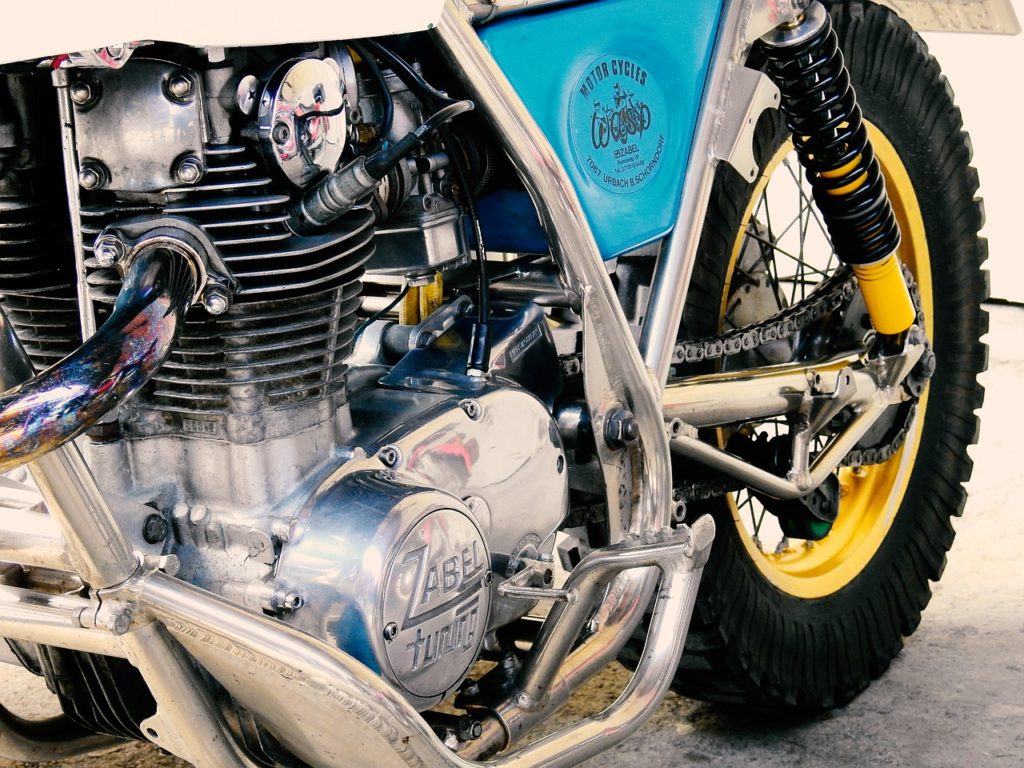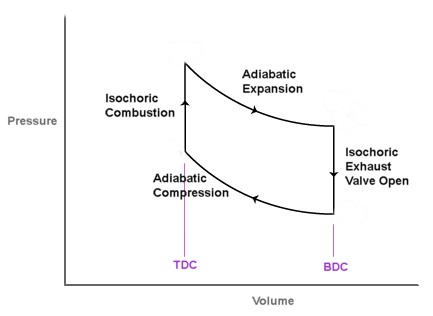An automotive combustion engine is a machine that converts chemical energy into mechanical energy.

The two types of combustion engines are: external and internal combustion engines. The most common thermodynamic cycle an IC engine operates on is the Otto Cycle.
The major components of an Internal Combustion (IC) engine are: piston, crankshaft, camshaft, cylinder, and connecting rod.
The IC engine uses a fixed cylinder and a moving piston to produce cycles of compression and expansion of the gases. The expanding combustion gases push the piston, which in turn rotates the crankshaft.
The rotating crankshaft, through a system of gears in the powertrain, produces motion which drives the vehicle’s wheels.
There are two types of IC engines commonly used: 2-Stroke and 4-Stroke.
Many other types of IC engines, such as 5- and 6-stroke, which are beyond the scope of this article.
Four Stroke Engine
A four-stroke engine is an IC engine in which the piston travels from the Top Dead Center (TDC) to the Bottom Dead Center (BDC) four times – or in four separate strokes – while turning a crankshaft.

Following the Otto Cycle, as functions of pressure and volume, the four separate strokes are:
1. Intake
The stroke begins at the TDC. The piston sucks in the air-fuel mixture into the cylinder through the intake valve. It then passes the mixture to the cylinder during its motion towards the BDC.
2. Compression (1-2)
This stroke begins at the BDC right at the end of the suction stroke, and ends at the TDC. Both the intake and exhaust valves are closed during this stage.
In this, the piston compresses the air-fuel mixture, reducing volume while increasing pressure and temperature.
This prepares the mixture for ignition in the next stroke.
Intake and compression together complete the first revolution of the crankshaft and the Otto Cycle.
3. Power/Combustion (2-3)
The power stroke begins the second revolution of the four stroke cycle.
While the piston is at TDC, the compressed combustible mixture is ignited by a spark plug (external source) or by the heat generated during compression.
The volume remains a constant, while the pressure and temperature increase. The piston is pushed to the BDC.
Later, the piston moves from the TDC to the BDC. This causes volume to increase and pressure and temperature to decrease. As a result, the air starts expanding.
The engine does mechanical on the crankshaft to turn it.
This causes the power, through a system of gears, to be transmitted to the powertrain and, from there, to the wheels, resulting in motion of the vehicle.
4. Exhaust (3-4)
During the exhaust stroke the exhaust valve opens due to reduction in pressure. While the piston is still at the BDC, the expansion in the previous stroke causes cooling and a reduction in pressure at a constant volume.
The piston then returns from the BDC to TDC.
This action expels the spent air-fuel mixture through the exhaust valve.
